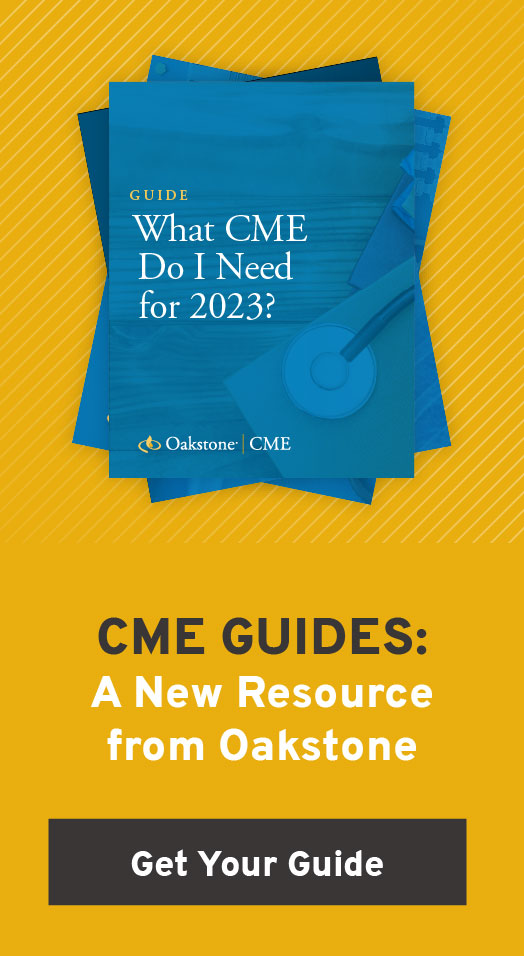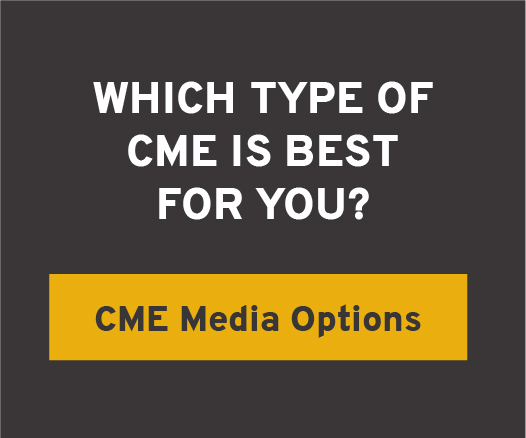What’s the Difference Between CE and CME?
Apr 9th 2024
Medical professionals must pursue continuing education each year. This is easier when you understand the difference between CE and CME requirements.
Medical professionals must pursue continuing education (CE) each year to stay in compliance with their state board of medical examiners. But there can be confusion over the difference between CE and CME, not to mention how each affects your annual requirements.
Learn more about the most common continuing education terms, what they mean and how they influence your career.
What Is CE?
CE stands for “continuing education.” The term CE is often conflated with CEU, which means “continuing education unit.” A CEU is equivalent to 10 CE contact hours. In general, a CE allows professionals who have already received formal training from a university or other educational institution to brush up on old concepts or stay up to date on breakthroughs in their field.
CE credits are a licensing requirement for all licensed medical professionals, including:
- Nurses
- Physicians
- Medical technologists
- Psychologists
- Medical librarians
- Pharmacists
How Does CE Differ from CME?
Physicians seek out further training and educational activities to maintain their licenses through continuing medical education (CME) courses.
The fundamental difference between CE and CME is that the former applies to all licensed medical professionals, while the latter applies primarily to physicians. So while all CME is CE, not all CE is CME.
To further complicate the issue, one CME credit is equal to one hour, also known as a contact hour. Meanwhile, one CEU is 10 contact hours. So 100 contact hours would equal 10 CEUs. It’s important to remember the conversion rate between CME and CEU, as states have a variety of approaches to tracking physician requirements.
Understanding Category 1 and Category 2 CME
There are two categories of CME assigned by the American Medical Association (AMA) — Category 1 and Category 2.
Category 1 credits are often event-specific. They can be earned by attending conferences and lectures — live and online — if the event is certified by the Accreditation Council for Continuing Medical Education (ACCME) or an ACCME-recognized medical society.
Category 2 credits are more elective because they are self-claimed and self-reported. According to the AMA, the activity must meet four distinct criteria. Physicians often fulfill Category 2 credits through such activities as teaching, reading relevant and authoritative medical journals or studies, and conducting research.
Why Does It Matter?
Nearly every state’s regulatory board has guidelines on the CME requirements for each profession. Depending on your profession, only certain CE credits will count toward your state’s licensing requirements.
Before registering for a course, make sure that the credits will count. You do not want to invest your time into a CE course only to find that the credits do not count as CMEs toward your annual requirement.
Oakstone CME makes it easy for physicians to avoid that mistake. All of our CMEs are clearly labeled in an easy-to-browse, single-topic course library. And once you click on a CME, the number of credits you can expect to earn in the course is clearly displayed at the top under the course title. Our subscription service offers CMEs only, so you are never confused about whether your continuing education counts toward your annual credit requirements.
Medical providers can also earn credits toward their continuing certification (CC) or maintenance of certification (MOC) requirement through many of our CME courses. While your state’s licensing board requires CME credits, some of the medical boards require other forms of CME, such as self-assessments or MOC Points, to maintain board certification by one or more of the member boards of the American Board of Medical Specialties (ABMS).
Our goal at Oakstone CME is always to help you earn required CME credits and stay current with actionable medical insights that can help you enhance patient care. We do all this while delivering an experience that fits your busy lifestyle.
The difference between CE and CME matters, and we can keep you on the right track during your learning journey.
Ready to get started? Explore our CME topic library and our subscription service.


